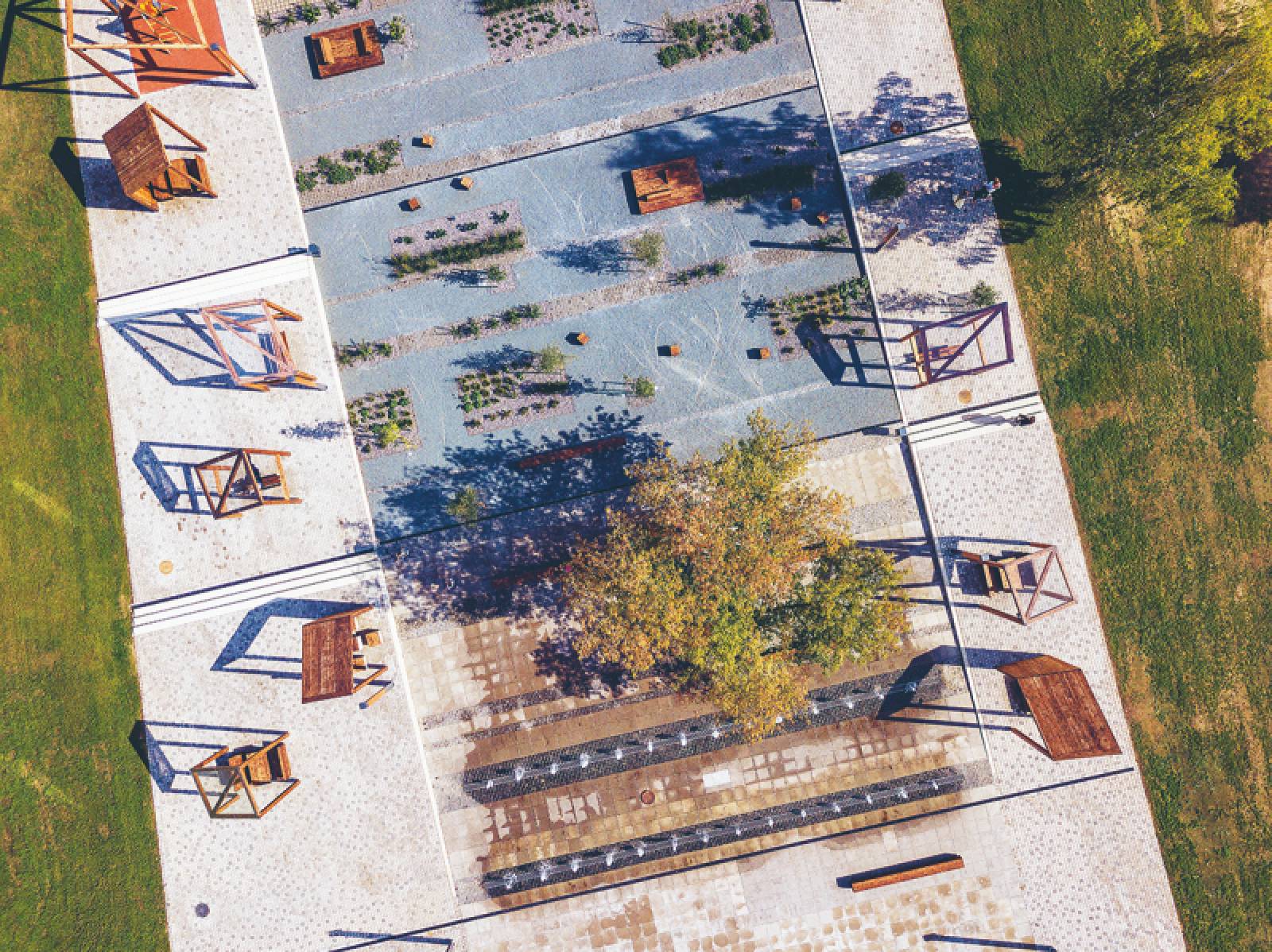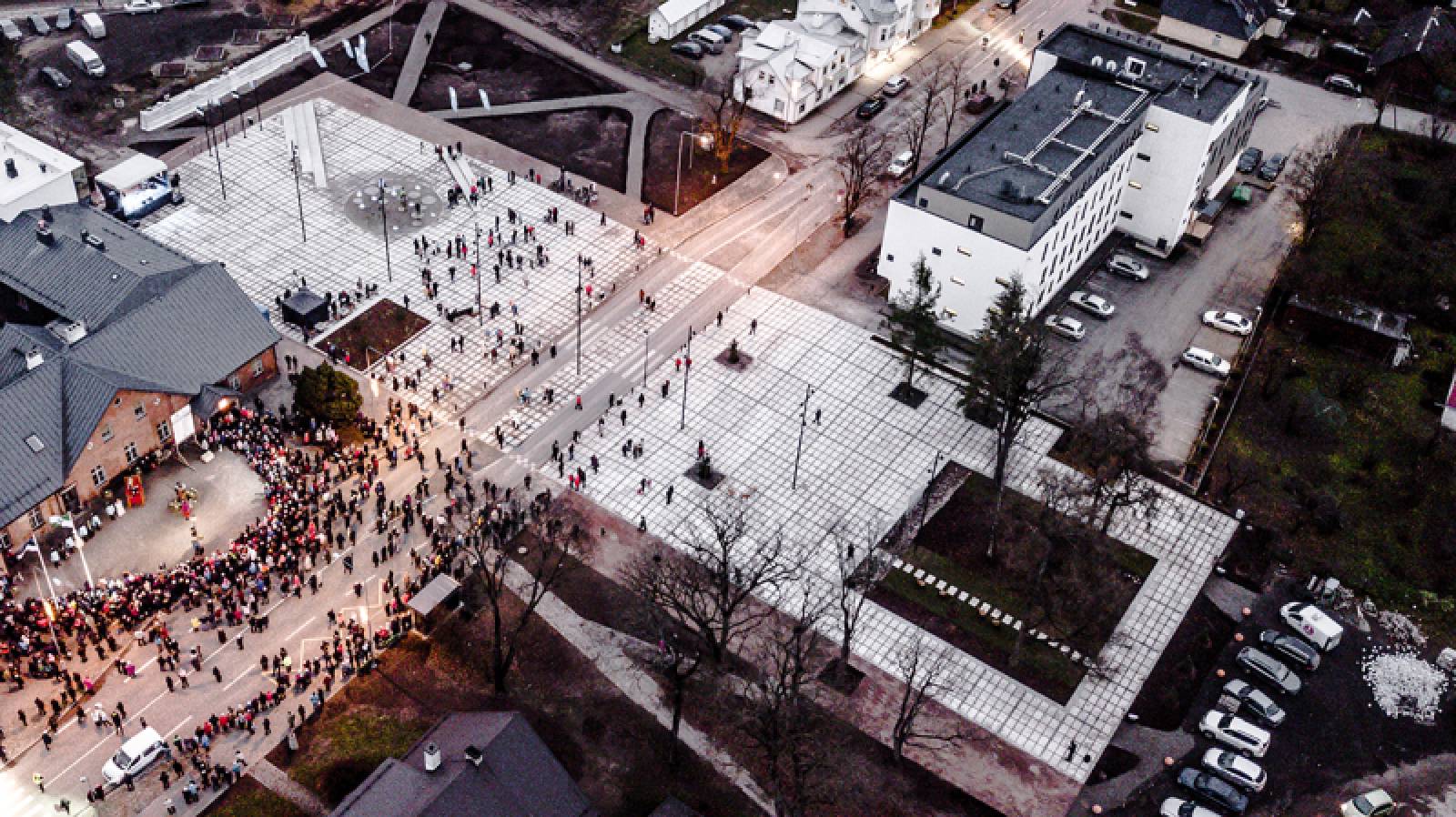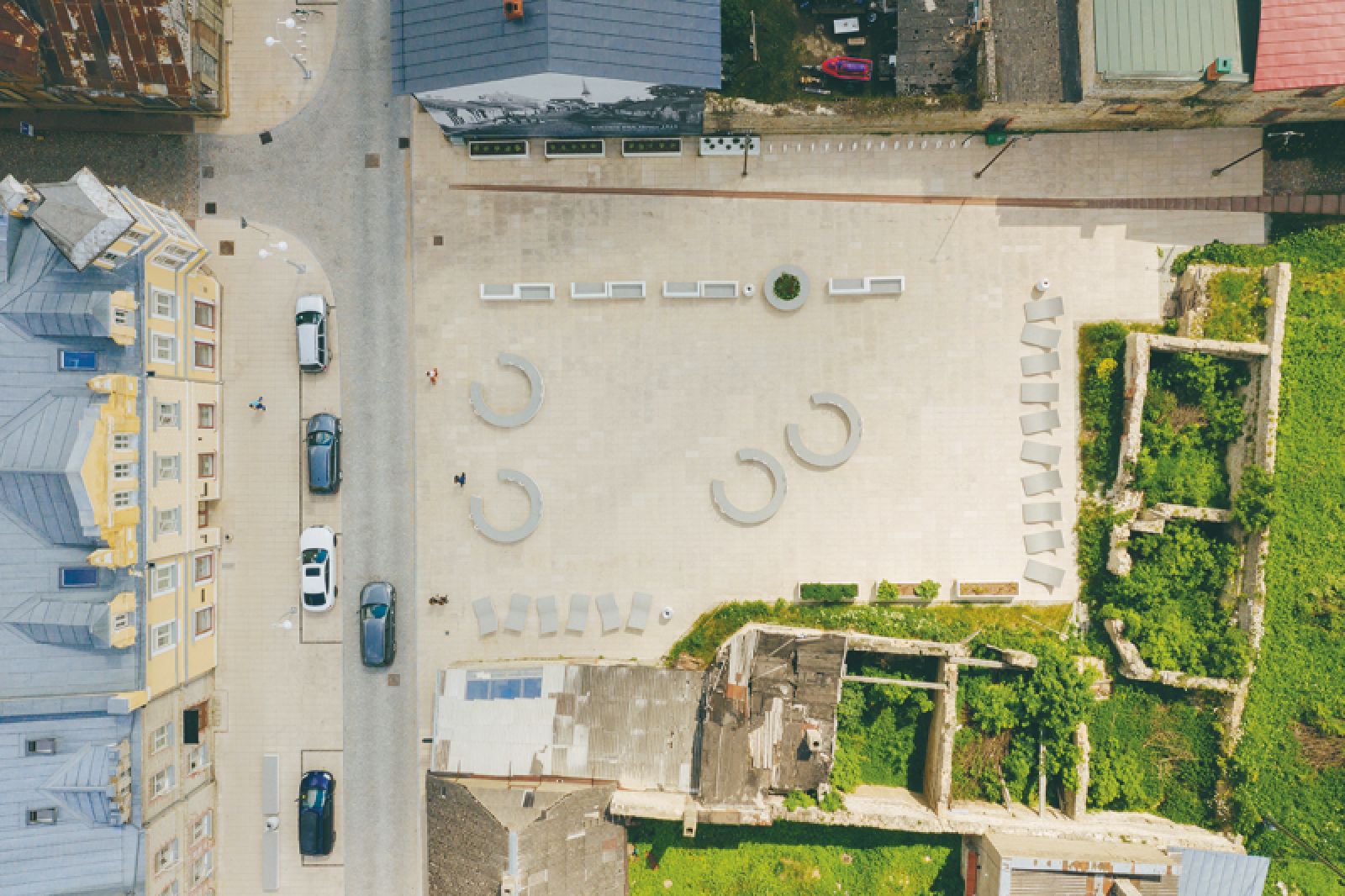The Estonian Centre for Architecture will present the exhibition “Square! Positively shrinking” curated by Jiří Tintěra, Garri Raagmaa, Kalle Vellevoog, Martin Pedanik and Paulina Pähn in the Pavilion of Estonia at the 17th International Architecture Exhibition of La Biennale di Venezia (May 22nd – November 21st, 2021), which will be hosted in the Arsenale complex.
Exploring the role of high-quality urban space in enhancing the future development of small towns that are in jeopardy of depopulation, the exhibition sparks a debate on the lesser known facet of urbanisation.
The phenomenon of shrinking cities is widespread throughout Europe and as a consequence of fundamental changes during the transition in 1989/1991, post-socialist Eastern Europe is strongly affected.
The influence of urbanisation and suburbanisation processes on local communities often has a greater impact than out-migration or low birth-rates at national level. As a result, 45 in 47 Estonian towns have lost a significant percentage of their population since 2000.
The most visible symptoms of shrinkage in urban space are building vacancies and brownfields, the predominantly low quality of residential premises, unsightly dilapidated buildings and an underinvested environment, which negatively impact residents and amplifies the vicious circle of decline.

Tõrva central square – Photo © Tiit Veermäe
While questioning the social, economic and environmental implications of de-urbanisation, “Square! Positively shrinking” showcases solutions to shape the renewed identity of shrinking cities via building demolitions, active housing policies, historic building restoration and urban space revitalisation.
The exhibition, in which video screenings play a central role, focuses on “Great Public Spaces” (Hea avalik ruum), organised within the framework of the Estonia 100 Architecture Programme, a remarkable example of urban space intervention in shrinking cities. Conceived on the occasion of the country’s 100th anniversary, the initiative aimed to regenerate the centres and public spaces of 15 Estonian towns by 2020. Source by Estonian Centre for Architecture and photos Courtesy of MINT LIST.









